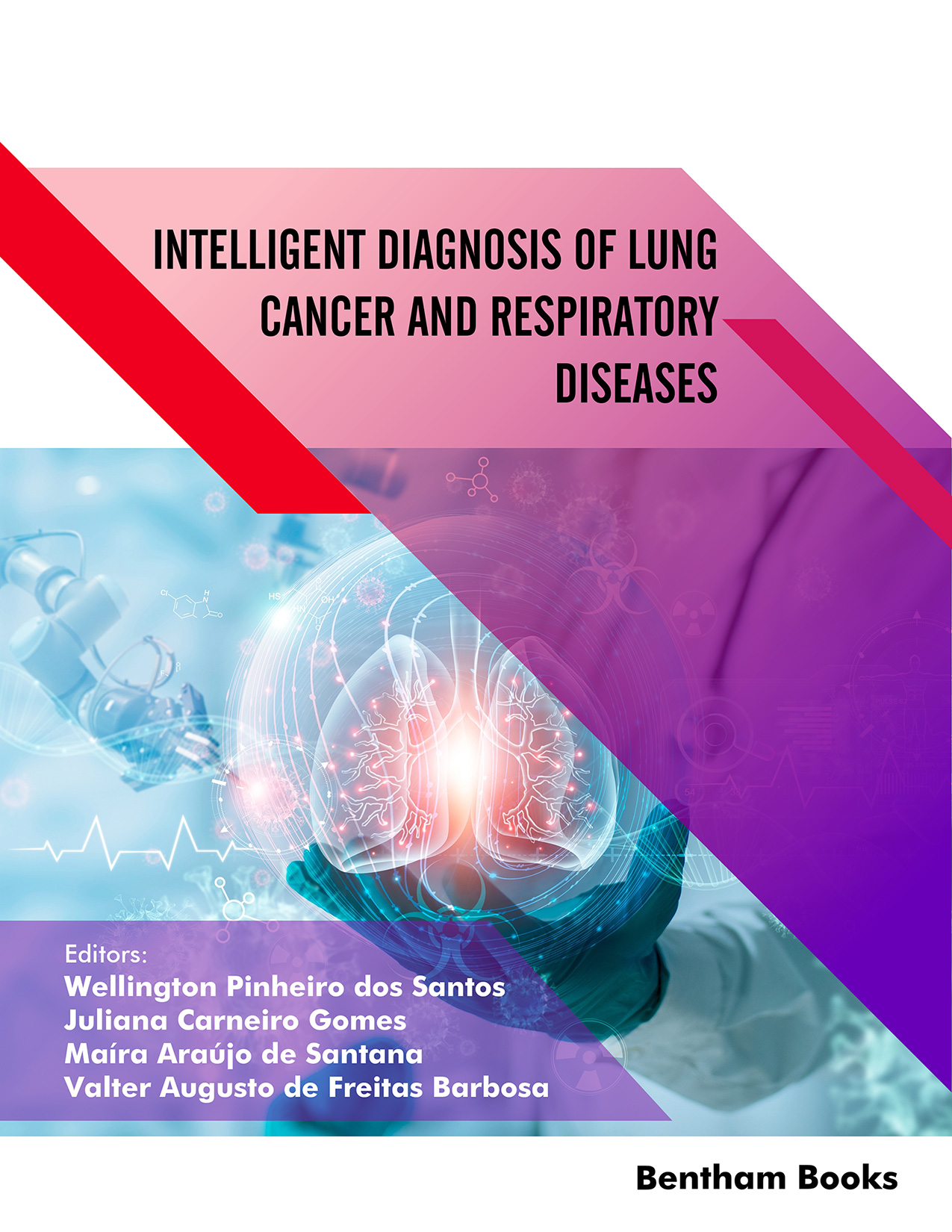Breathing is the very first and most fundamental action that we take at birth. This fundamental step usually is taken into lower consideration as time goes by. Whenever any disease rises over the respiratory system, we are once again reminded of this essential value of respiratory function. Lung cancer has been a threat to the respiratory system, deadly for 1.8 million people in 2020, mainly propelled by smoking, with its diagnoses representing approximately 13% of the total cancer diagnosis in the whole world. This peculiar kind of cancer has posed a huge challenge for oncological research due to its high rate of mortality under X-ray screening when compared with other types of cancer. Mainly at its early stage, well-circumscribed, juxta-pleural, juxta-vascular and pleural-tail, observed in a couple of millimeters (e.g. < 3 mm). More recently, studies based on tomography screening have been more successful in reducing mortality.
Likewise, lung function is often severely challenged by tuberculosis. A ubiquitous human disease, the drama of tuberculosis inspires many great works of art, from Verdi’s la Traviata, to Victor Hugo’s Les Miserables. Tuberculosis is caused by the bacteria called Mycobacterium tuberculosis. Despite its low-cost techniques to approach it, this disease has yearly killed 1.7 million people out of 10 million infected worldwide.
In addition to the high rate of death by lung cancer, and tuberculosis, in the last 18 months, respiratory system research has faced a worldwide challenge, the COVID-19 pandemic. The acute disease is caused by the virus SARS-CoV-2. Beyond the system function, COVID-19 is a systemic disease over the vascular endothelium. In this relatively short-time, this threat to respiratory function suppressed more than 4.7 million human lives in the world, of which over a million were in the Americas. Respiratory insufficiency is one of the most dangerous symptoms of COVID-19, which demands mechanical ventilation in a significant part of the total hospitalized patients. When a large fraction of the population is infected in a small fraction of time, the demand for mechanical ventilation greatly surpasses the health system’s capacity, dramatically increasing mortality. Therefore, optimal management of the resources related to mechanical ventilation is critical to cope with the COVID-19 pandemic. Due to a wide range of impacts, and current technologies to exchange scientific resources, the response to this pandemic rapidly united efforts from all dimensions of human knowledge, including computer science, with its robust techniques to study the respiratory system.
All of these show us that tools to aid correct diagnosis of respiratory diseases may save uncountable lives every year. In the last decades, several computer-aided diagnosis (CAD) systems have been proposed. These systems can be built using different approaches. When these systems are built based on Artificial Intelligence (AI) approaches, they are called Intelligent Systems, able to learn from the data, which have supported the intelligent diagnosis of respiratory diseases. More recently, the world has witnessed an enormous development of AI techniques to explore large amounts of health data, including image data related to respiratory diseases. The accuracy of these techniques has increased, mostly based on new pre-processing methods and a fast increasing number of images in health data as well.
The COVID-19's final diagnosis is based on lung tomography. Thus, the infection spreading supports a corresponding propagation of the demands for lung tomographies. This coupled-spreading phenomenon has created an unprecedented database of lung tomographies, which, incidentally has supported early-stage lung cancer diagnosis in the same case in which the event trigger was the COVID-19 final diagnosis. Such an unprecedented database of lung tomographies certainly will fuel significant improvement in the accuracy of these AI techniques applied to lung cancer and other respiratory diseases observed in this kind of data.
Despite the fast advances in the past decade, the near future promises a flood of AI applications for research and clinics of the respiratory system, including high-resolution lung 2D/3D-images reconstruction as magnificent support in respiratory diseases diagnosis. Beyond a piece of clear information on the fundamentals of respiratory function and related diseases, this volume provides an opportunity to dive into the understanding of relevant diseases involving respiratory diseases by applying the state of art techniques powered by Artificial Intelligence over data from the respiratory system and other related systems.
Nivaldo A. P. de Vasconcelos
Department of Biomedical Engineering
Universidade Federal de Pernambuco
Recife, Brazil

